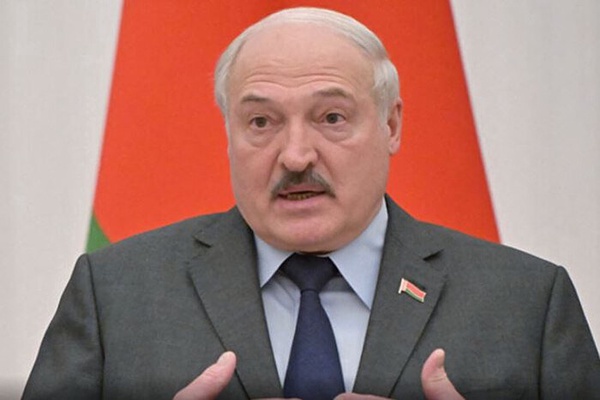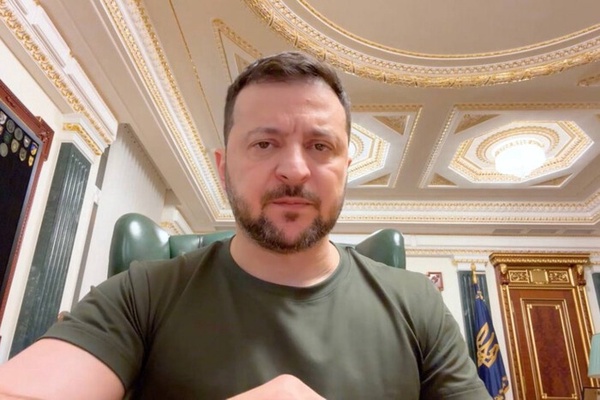What power engineers aren’t saying: five theses that favour russian PSYOPS

Since October, Russia has been destroying Ukraine’ power grid deliberately. Last week, there was another large-scale shelling of critical infrastructure. During the month and a half of missile attacks, some energy facilities have either been completely destroyed or require long-term repairs. Thus, in recent weeks, blackouts have become a common occurrence in our lives.
Due to these frequent strikes, some Ukrainians have become increasingly irritated, as the outages last for eight hours or more a day – from hourly to emergency blackouts. Hundreds of identical comments are posted on social media, such as: “why are some buildings blacked out and others not?”, “we’re sitting here without electricity, while all the windows on the neighbouring street are lit up”, etc. Such complaints give rise to fakes and conspiracy theories. For example, in recent weeks, the post entitled “What power engineers aren’t saying?” has received thousands of likes and has been widely shared on social media. The author argues that the destruction of energy facilities isn’t critical and that the blackouts are a conspiracy between the state and business owners “to bleed people dry.”
We discussed this article with energy experts. In their opinion, the text entitled “What the power engineers aren’t saying?” is a good example of a russian information and psychological operation, and we’ll tell you why by presenting certain theses that we managed to isolate from the post. If you read the text to the end, you’ll find out what to what extent some so-called “pagans” are involved.
 Text on image: What power engineers aren’t saying: five theses that favour russian PSYOPS
Text on image: What power engineers aren’t saying: five theses that favour russian PSYOPS
1) The russians have been attacking energy facilities in Ukraine since the end of February, but the blackouts started in October only... because someone benefits from this.
In order to answer the question why there were no restrictions on electricity consumption until October, you should first understand how the Ukrainian power grid works. Nuclear, thermal and hydropower stations generate electricity within the system. To operate all the stations, it’s important that the amount of energy produced is equal to the amount of energy consumed. In other words, the system must generate exactly as much as the entire country consumes, neither a watt less nor a watt more.
If too much energy is consumed, power plants become overloaded, which will inevitably lead to accidents and equipment loss. Excess power generation can also harm power stations, because electrical frequency increases and all the energy equipment is again at risk.
Nuclear power is the main energy sector for our country. Before the russian invasion, nuclear power plants provided 55% of the country’s energy. This type of power generation is quite cheap and can meet the basic level of our country’s consumption, but it has one drawback - the amount of energy from nuclear power plants cannot be rapidly adjusted. As already mentioned above, for the system to operate in the usual way, it’s crucial that the amount of energy produced is equal to the amount consumed.
To ensure that electricity is generated in line with consumption, so-called “shunt reactors” come to the rescue; they can quickly increase or decrease the amount of generated electricity. In our power system, hydroelectric power plants and thermal power plants have such regulatory functions. The share of energy produced by hydroelectric power plants is quite small, amounting to about 7% of total energy produced. Therefore, here we refer to thermal power plants that generate more than 30% of power capacity. This energy costs the most, but such power plants are also more efficient in carrying out their function.
So, as soon as electricity is produced, it should be transferred to the consumer. This happens through power grids. The electrical transmission system is complex and extensive - millions of kilometres of overhead lines and thousands of substations. All these grids are managed by Ukrenergo. As the country’s chief dispatcher, this company is responsible for balancing electricity generation, transmission and consumption, i.e. it tells all regional power distribution companies and energy generation companies what to do. In addition, grids have different voltage classes. The higher the voltage, the more electricity the grid can transmit with fewer losses. In other words, if somewhere there are two regions (oblasts) – one generating a large amount of electricity and another consuming a lot of energy, it’s beneficial to connect them with a 750 kV line, etc.
Olha Kosharna, a nuclear energy expert, explained to us that 750 kV grids run from the nuclear power plant; at the hub substation they’re reduced to 330 kV; then they run to the next substation – up to 150 kV, and then to another substation, and power finally arrives with even lower voltage at the consumer’s home.
So, what have the russians been doing? On February 24, the occupiers began to massively destroy enterprises, strike at thermal power plants in different regions, and seized the Zaporizhzhia NPP. As a result, electricity consumption dropped and power engineers were forced to reduce power generation, but they maintained a balance and the power system and the energy system, functioned without any restrictions on electricity consumption. Last but not least, he overall situation didn’t impact consumers because many large industrial enterprises, which were the largest consumers of electricity, stopped operating, the needs of small and medium-sized businesses decreased, and many Ukrainians were forced to flee abroad. But that was the situation until October 10.
Since then, the russians have been deliberately destroying power distribution grids and transmission facilities. Our energy system faces a power shortage because power plant units have been damaged and less electricity is being generated than consumed; there are also problems with power transmission because the grids have been damaged by shelling. The situation is getting worse due to increased electricity consumption as a result of the seasonal drop in temperature.
In order to balance the energy system - to ensure that the amount of energy produced is equal to the amount of energy consumed, which we constantly refer to here - power engineers are forced to resort to emergency shutdowns. In short, to prevent accidents at power plants, they have to turn off electricity in certain districts or even settlements using manual or automatic mode.
As Olha Buslavets, Candidate of Technical Sciences and Ukrainian energy specialist, explains in her post, emergency shutdowns occur when Ukrenergo’s dispatcher sees that consumption will exceed the capacity of available energy generation or grids. Ukrenergo then orders distribution system operators, i.e. regional power distribution companies, to carry out emergency shutdowns and informs them of the megawatt limit. The Oblenergos (regional companies) disconnect consumer groups in turn until the limit is reached. It’s up to the regional power distribution company to decide which consumers will be shut down and in which order.
Schedules for energy and power consumption restrictions, as well as emergency ones, are drawn up by regional power distribution companies annually in advance, agreed with local authorities, communicated to Ukrenergo, and implemented by order of the Ministry of Energy. This year, it was anticipated that russia would strike at the energy infrastructure as often and as forcefully as possible, so Ukrenergo had to update schedules for power supply restrictions in advance.
Why are some buildings constantly and prolongedly blacked out, while others are not? Olha Buslavets explains that it depends on which power line your building is connected to. In large cities, some consumers have the same power line as hospitals, water utilities or strategic facilities that cannot be disconnected. That’s why they aren’t included in these schedules.
The power isn’t always turned off on schedule and not always in all places, because it’s impossible to predict emergency outages, and there are no schedules for emergency blackouts. There can be fewer blackouts if we use electricity carefully and economically.
2) The Office of the President stated that 40% of the energy generation capacity was lost due to shelling; this is false information. Damage to the generation capacity of Ukrainian power plants doesn’t exceed 5%, and the remaining 35% is due to damage to power lines and transformer stations. Therefore, there’s no need to limit power supply, because “if a transformer is damaged somewhere in the village, how will this impact power outage in another village? If your electric kettle burns, how can you prevent this from happening by turning off the refrigerator?”
It’s wrong to think that power lines and substations don’t affect the stability of the entire power grid. As expert Mark Savchuk explains in his post, the entire grid can be “knocked out” in two instances. The first is the damage to transformer stations near nuclear power plants. These are the 750 substations we mentioned above. What happens if a substation is destroyed? It will go into emergency shutdown. This reduces the service life of nuclear power plants, which aren’t designed for regular emergency shutdowns. In addition, transformer substations, which convert 750 kV to 330 kV are in short supply, and almost impossible to repair because they’re manufactured in only a few countries, and also in russia, Central Asia, and at the Zaporizhzhya Transformer Plant.
Damage to major hub substations can also “knock out” the system, as the grid is a kind of “web” where everything is connected. If several hub substations are affected at the same time, there will be a serious imbalance in the regions (where either too much electricity is generated or much more is consumed than produced). At such moments, in order to prevent an accident and equipment from being damaged by a power surge or a sudden voltage drop, the automatic control system simply shuts everything down. Thus, the destruction of several hub power stations can trigger a cascading power grid failure, when everything is “blacked out” for a long while.
According to Olha Kosharna, the russians deliberately shelled Ukrainian hub substations. They were advised by russian power engineers; moreover, Moscow has power grid designs from the soviet era. In addition, Ukraine’s unified energy system isn’t autonomous; until February 23, it worked synchronously with belarusian and russian systems (recently it has been synchronized with the European energy system).
Therefore, since the russians are methodically striking Ukrainian substations, electricity can’t be transmitted. This means that the grid’s reliability and performance are limited. That’s why, if a town consumes 15k MW, and the grid can only deliver 10k MW, long outages occur.
For example, Kyiv underwent a power outage three times in one day. This was caused by the fact that the hub transformer substation in the region, which distributed electricity from the Rivne NPP and Khmelnytsky NPP, was repeatedly attacked and damaged.
3) Electricity supply is restricted so that private companies and the government can sell electricity abroad, earning incredible profits from ordinary people in wartime.
Yes, Ukraine did export energy abroad. According to the Ministry of Energy, even after the Zaporizhzhia Nuclear Power Plant, which has been under russian occupation for over seven months, was shut down, Ukraine continued to fulfill its obligations to European partners with regard to electricity exports. In particular, after synchronizing our grid with the EU, and transmitting power through separate lines to Moldova and Poland, we helped Europe to replace russian gas and maintained the stability of the European energy system.
For example, in September, the Ukrenergo press service reported that Ukrainian electricity producers could export a total of 300 MW to Romania and Slovakia 24/7, and the total cost for access to interstate power grids from June 30 to September 18 amounted to over 4.1 billion hryvnias.
In October, Ukraine was supposed to discuss the next increase in power capacity with Romania, Slovakia, and Hungary.
Everything came to a halt on October 10, when russia launched a large-scale missile attack across the country, striking thermal generation facilities and power substations. Since October 11, 2022, Ukraine has stopped exporting electricity in order to stabilize its own power system.
Perhaps the author of the article entitled “What power engineers aren’t saying” implies that the government continues to supply the EU, but hides it from the people. However, data on electricity exports, as well as electricity imports, can be viewed in the public domain on the platform of the European Network of Transmission System Operators for Electricity (ENTSO-E).
This platform reports, for example, that Ukraine has been forced to import electricity since October.
4) Electricity consumption in Ukraine in 2022 has decreased by 30-40% due to the closure of production facilities and businesses; at least 10% of Ukrainians have left Ukraine, so there should be enough electricity for everyone.
In previous years, Ukraine generated enough electricity to sell abroad. But as of February 24, electricity generation actually decreased by 30% in March and continues to maintain this level.
The seizure of the Zaporizhzhya NPP, which generated more than 20% of Ukraine’s electricity, had a significant impact on the Ukrainian power grid. Today, it doesn’t meet the needs of the Ukrainian power grid, and on the contrary, feeds on it in order to prevent the system from breaking down. If we add the destroyed hub substations and the “power capacity” problems, it’s highly unlikely that the 10% of Ukrainians who left the country actually impact the problems faced by the Ukrainian power system.
In addition, as expert and analyst Oleksandr Parashchiy explains, even with zero generation damage, we cannot count on maximum power capacity in winter. We can allegedly produce more than 50 million kW. In fact, the maximum for this winter is one third of this figure.
Why is this so? Because despite the existing large-capacity system, historically speaking, producers have never produced more than 48%-96%. Renewable sources (hydro and especially solar power plants) significantly reduce energy production in winter. In addition, the power plants that are still in the occupied territories should be taken into account.
5) “You don’t need to tell me about the complex processes involving electrical power distribution and processes in the electricity sector. When you align the phases and remove the wires from the extension cords from under your feet at your production facilities and at least in your offices, you can then start talking about physics, standards, basic electrical engineering theory, and power redistribution."
The original source of the article entitled “What power engineers aren’t saying” seems to be an article that appeared on October 31 on the Sivershchyna website. We didn’t find an earlier publication date. The author is Anatoliy Yaroved. This is a pseudonym used by Anatoliy Yaroshenko, a Chernihiv resident who is the head and founder of a Chernihiv-based religious community professing the ancient Slavic faith – Kolo Sivershchyny.
Anatoliy Yaroved has a YouTube channel where he posts videos for pagans and videos about nature and the surrounding world. On the Sivershchyna website, he periodically publishes columns in which he expresses his own thoughts on the situation in Ukraine, as well as texts about the history of Chernihiv Region, paganism, and nature. To what extent this testifies to the author’s professionalism and confirms that he is knowledgeable about energy, you are free to judge for yourself ![]()






